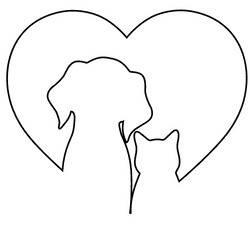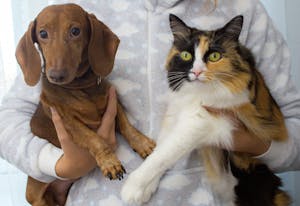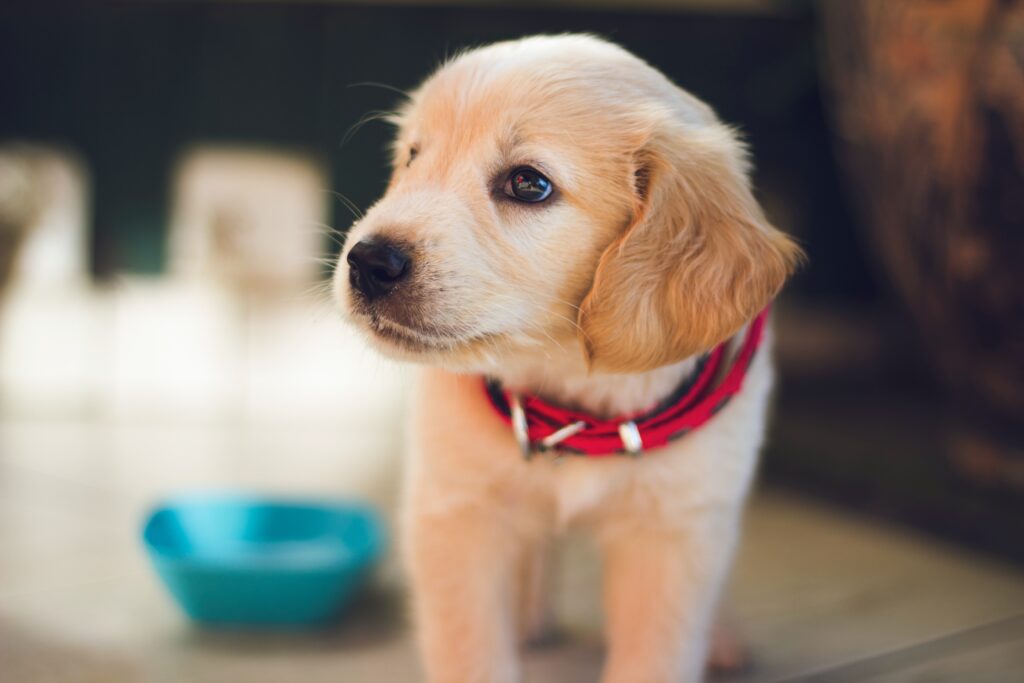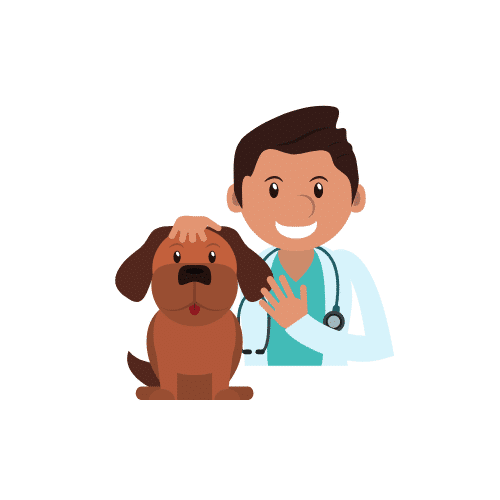Vitamins and minerals are part of the proper diet of every dog and cat. In a balanced diet, their content should be optimal. FEDIAF guidelines specify a certain minimum, and for some substances, a maximum that should be provided with food.
Healthy bones – calcium and phosphorus
In the case of many minerals, it is important what is delivered together, as well as the proportions between the individual ingredients. The ratio of calcium to phosphorus is noteworthy – it should be at least 1:1, but there can be more calcium (up to a maximum of 2:1 in adulthood). We encourage you to read the FEDIAF dietary guidelines. Here you will find the most interesting downloadable materials and dietary guidelines LINK.
However, it should not be the case that there is a 1:2 ratio in the meal, i.e. that we have twice as much phosphorus. This could happen with a cooked diet if the dog/cat is not given additional calcium and other mineral supplementation. In the case of home-cooked meals , taurine supplementation for the cat also becomes extremely important. It is added to a meal and served with it.
Do not give more, especially for selected vitamins
Both too little and too much of selected ingredients in the diet can be harmful to the body of a dog or cat. Examples of such ingredients are, for example, fat-soluble vitamins A, D, E and for them FEDIAF provides the maximum daily doses in the recommendations.
Remember that dogs do not synthesize vitaminD3 under the influence of sunlight, so if we do not provide it in the diet in the form of supplementation, there will be a deficiency of this vitamin in the dog’s body. VitaminD3 is essential for many life processes, primarily for the proper phosphorus and calcium metabolism, but not only. The need for supplementation applies to a homemade diet, in the case of complete foods there is no need for it.
In the case of increasing the fat content in the diet, it is worth taking into account an increased amount of vitamin E, which protects fat from oxidation. Typically, cat diets are more high in fat.
The need for vitamin A, on the other hand, should be met by beta-carotene in plants or ready-made vitamin A of animal origin should be administered.
Supplementation of commercial complete diets is not necessary
Usually, manufacturers of complete foods make sure to provide the right amount of a given ingredient so that the content of all nutrients is in accordance with the guidelines.
With home-cooked meals, this responsibility rests with the dog’s guardian. In this case, it is best to choose a mineral and vitamin preparation that contains the right amount of all nutrients recommended for a dog or cat, and supplement homemade meals accordingly.
It is worth considering giving calcium in the form of calcium citrate, especially in the case of cats. This form is much better absorbed than calcium carbonate – check the label for recommendations.
The most common nutritional mistakes in the diet of dogs and cats
Amount of calcium
If the diet lacks nutrients, many negative phenomena can occur. The osteoarticular system is at risk of abnormalities due to an excess or deficiency of certain dietary components.
A common nutritional mistake, made especially during the dog’s growth, is the consumption of excessive amounts of calcium (e.g. the dog receives complete meals, and additionally supplementation with mineral and vitamin preparations) or vice versa – lack of supplementation in the home diet.
Unfortunately, this is not a recommended procedure, because there is usually the development of other diseases related to excessive supply or lack of calcium, which is also dangerous for a dog or cat.
It happens, especially in home diets, that the supply of calcium, phosphorus, vitaminD3 is insufficient, and often there is simply an excess of phosphorus in relation to calcium, which also causes diseases such as:
- cartilage and bone necrosis, hip or elbow dysplasia,
- osteoarthritis, i.e. degenerative joint disease, curvature, thickening on long bones or ribs.
Overweight and obesity
Another very common condition in dogs and cats associated with improper feeding is the occurrence of overweight and obesity, which is an inflammation of the body. Being overweight is dangerous because it increases the risk of other diseases because the body is weakened. Cats with constant access to food and with no going outside and leading a “hunter” life, without making adjustments, are exposed to excessive weight. Adaptations consist in introducing games with the cat, as well as, for example, building shelves where cats can roam, tunnels, etc.
In addition, incorrect weight shortens the life of our pet.
Lack of vitamins and minerals in the diet of dogs and cats
However, it is not only disturbances in the supply of these basic ingredients that can affect the health of the dog. First of all, remember about the influence of vitamins.
Vitamins can also affect growth, cause cognitive disorders or motor incoherence in animals. Many diseases or symptoms occurring in animals result from deficiencies of certain vitamins, e.g.:
- vitaminB1 deficiencies cause growth impairment in puppies or kittens, and motor clumsiness in adults (vitaminB1 can be found in: rice, sunflower sprouts, pork, liver, kidneys or administered by appropriate supplementation),
- deficiencies of vitaminsB2,B3,B12 cause muscle tremors, weakness, eye problems,
- vitamin D deficiencies affect calcium and phosphorus metabolism,
- lack of vitamin E, an antioxidant that inhibits the formation of clots and affects muscle performance.
Mineral deficiencies are also associated with a lot of negative consequences. Selenium is very difficult to provide in the diet, and its deficiency can cause irreversible effects. Selenium affects the proper functioning of the thyroid gland and the immune system. Selenium deficiency can cause anxiety, fatigue, and its excess can be toxic.
Iodine deficiencies, in turn, can affect thyroid diseases, muscle weakness, and various neuropathies. Iodine can usually be found in fish, eggs, and poultry offal.
In conclusion, a lack or excess of each ingredient can be harmful to health and sometimes even endangers the life of a dog or cat.




